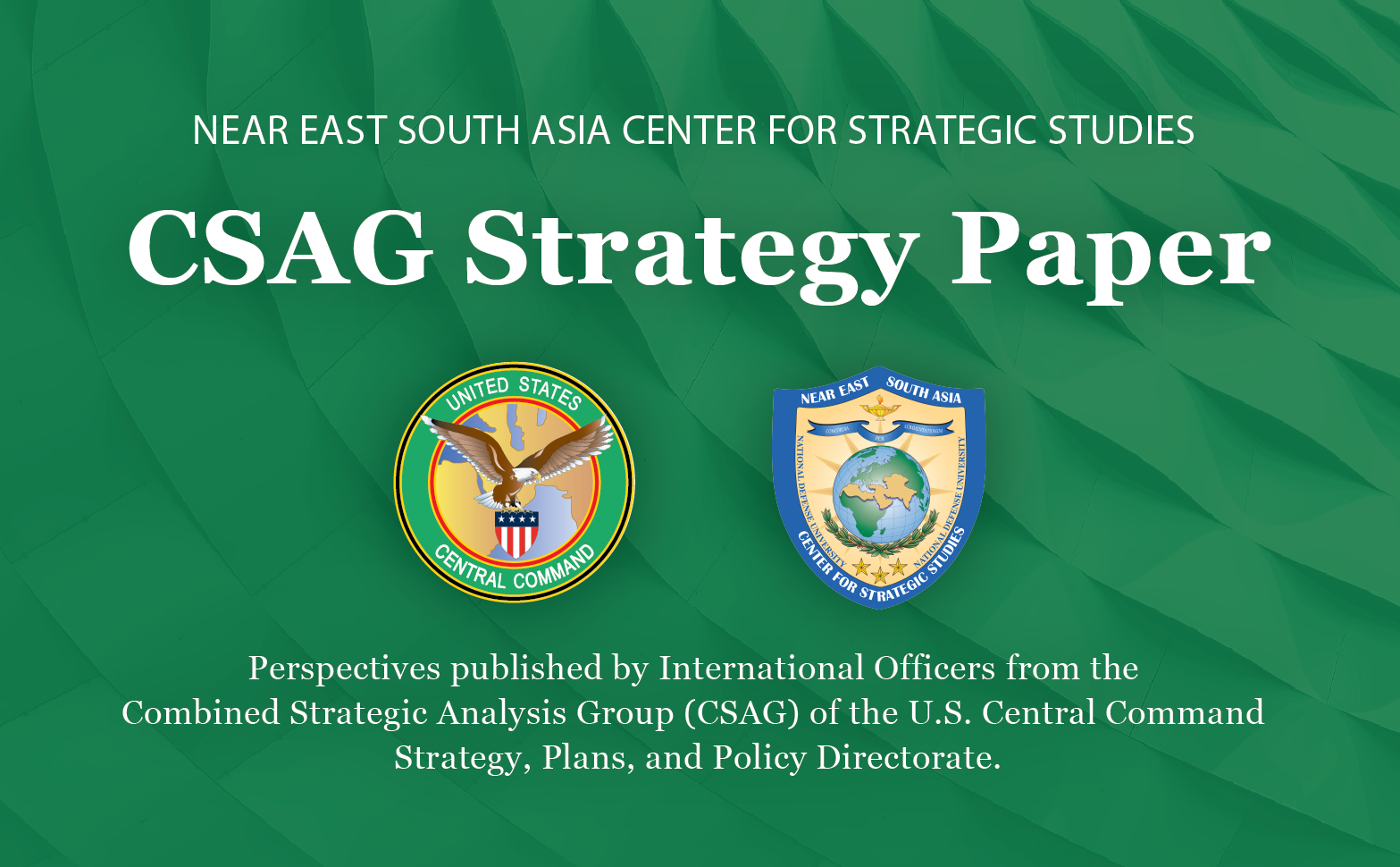
CSAG STRATEGY PAPER
By: CDR Hubert Mróz, POL (CSAG/CCJ5) and MAJ Essa Almansoori, UAE (CSAG/CCJ5)
14 April 2023
Overview:
The strategic importance of the Red Sea basin, together with the Suez Canal, is obvious. Nevertheless, there are reasons to believe that the Red Sea region is a neglected nexus by the US, but not by others such as China, Russia and Iran. This neglect is primarily because it is a relatively calm area, and this is certainly due to global mutual interest in maintaining this status quo. This interest requires that the Sea Line of Communication (SLOC) be navigable through the Red Sea.
The importance of the Red Sea region should be seen through the prism of growing Chinese investment (mainly in the port industry), some evidence of Russian expansion, and the highest level of Iran-backed and Iran-orchestrated activities in a decade. All this makes the Red Sea region another direction from which the interests of the US and its partners could be affected. The CENTCOM AOR is therefore compressed by a multi-vector force, which in turn requires additional effort from CENTCOM and its partners (Figure 1).
In the case of the countries bordering the Red Sea, there is a phenomenon of multipolarity, which means that these countries can choose strategic partners best suited to their needs. This also applies to Egypt, which is particularly important for the US and CENTCOM due to its location in this part of the world.With the growing interest by the superpowers and some regional and junior powers in the region (including the GCC countries, Israel, Türkiye, France, Italy and Japan), the region is being charged with significant military potential, which can lead to kinetic incidents due to misunderstanding of intentions or simply to oversaturation of this narrow basin with too many combat systems.
The absence or ineffective presence of the US and its allies, as well as the simultaneous presence of China, Russia and Iran in the maritime region, may provide these countries with the opportunity to exchange the benefits of their capabilities and to represent their interests better than would be possible on their own. A scenario in which a Chinese-Russian-Iranian “triangle of benefits” occurs in the Red Sea region is possible and could be joined by others in the future. At the same time, several regional initiatives on maritime security have been conceived, but their effectiveness is questionable.
In line with the trend of increasing activity and interest, there is a significant risk of disorder in the Red Sea region, including access to ABO, undisrupted SLOCs, logistics hubs, food and water security and environmental issues, including the FSO Safer case.
Therefore, if remoteness continues, there is a risk that the stable status quo will falter.
Key Points:
- The Red Sea region is a neglected nexus by the US, but not by others such as China, Russia and Iran.
- The importance of the Red Sea region must be viewed through the lens of increasing Chinese investments (45% in the port areas) and noticeable plans to expand Russia’s footprint.
- Multipolarity allows the region to select the best partner of choice, tailored to its needs (not exclusive but inclusive), including EGY.
- In line with the trend of increasing activity, there is a significant risk of disorder in the Red Sea region, including access to ABO.
- The international importance of the Red Sea region is evidenced by the visible military presence of world and junior powers.
- The “Triangle of benefits” – China, Russia and Iran can benefit from each other in the Red Sea region.
- There are several regional maritime security constructs, but they are not very successful.
- The restoration of Saudi-Iranian diplomatic ties with Chinese mediation could have both positive and negative implications for CENTCOM.
- Solution for FSO Safer is urgently needed and may be the first pillar of future regional cooperation.
Read the CSAG Information Paper published earlier this year on “The Red Sea – Neglected Nexus”
View other USCENTCOM Combined Strategic Analysis Group (CSAG) papers here.
The opinions and conclusions expressed herein are those of a number of international officers within the Combined Strategic Analysis Group (CSAG) and do not necessarily reflect the views of United States Central Command, not of the nations represented within the CSAG or any other governmental agency.